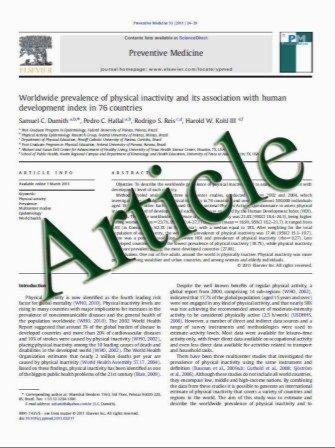Localization of type III collagen in the lingual mucosa of rats during the morphogenesis of circumvallate papillae
- نوع فایل : کتاب
- زبان : انگلیسی
- مؤلف : Shin-ichi Iwasaki • Hideki Yoshizawa • Hidekazu Aoyagi
- چاپ و سال / کشور: 2011
Description
In an effort to identify a possible role for type III collagen in the morphogenesis of circumvallate papillae on the surface of the rat tongue, we examined its appearance by fluorescent immunostaining, in conjunction with differential interference contrast images and images obtained, after staining with toluidine blue, in the transmission mode by laser-scanning microscopy. We analyzed semi-ultrathin sections of epoxy resin-embedded samples of the lingual mucosa of embryonic and juvenile rats, 13 days after conception (E13) to day 21 after birth (P21). Immunoreactivity specific for type III collagen was recognized first in the mesenchymal connective tissue just beneath the circumvallate papilla placode in fetuses on E13. At this stage, most of the lingual epithelium with the exception of the circumvallate papilla placode was pseudostratified epithelium composed of one or two layers of cuboidal cells. However, the epithelium of the circumvallate papilla placode was composed of several layers of cuboidal cells. Immunoreactivity specific for type III collagen was detected mainly on the lamina propria just beneath the lingual epithelium of the rudiment of the circumvallate papilla and the developing circumvallate papilla in fetuses on E15 and E17, and slight immunostaining was detected on the lamina propria around the rudiment. In fetuses on E19, immunoreactivity specific for type III collagen was widely and densely distributed on the connective tissue around the developing circumvallate papillae and, also, on the connective tissue that surrounded the lingual muscle. However, the immunoreactivity specific for type III collagen was sparsely distributed on the lamina propria of each central papillar structure. After birth, from P0 to P14, morphogenesis of the circumvallate papillae advanced gradually with the increase in the total volume of the tongue. At these postnatal stages, the intensity of the fluorescence due to immunoreactivity specific for type III collagen was distinctively distributed on the lamina propria around each circumvallate papilla, on each central bulge and on the connective tissue that surrounded the lingual muscle. However, immunofluorescence was less distinct on the connective tissue that surrounded the lingual muscle. Thus, type III collagen appeared in conjunction with the morphogenesis of the circumvallate papillae, as well as in the connective tissue that surrounded the lingual muscle during myogenesis of the rat tongue.
Odontology DOI 10.1007/s10266-011-0020-7 Received: 27 October 2009 / Accepted: 1 February 2011


